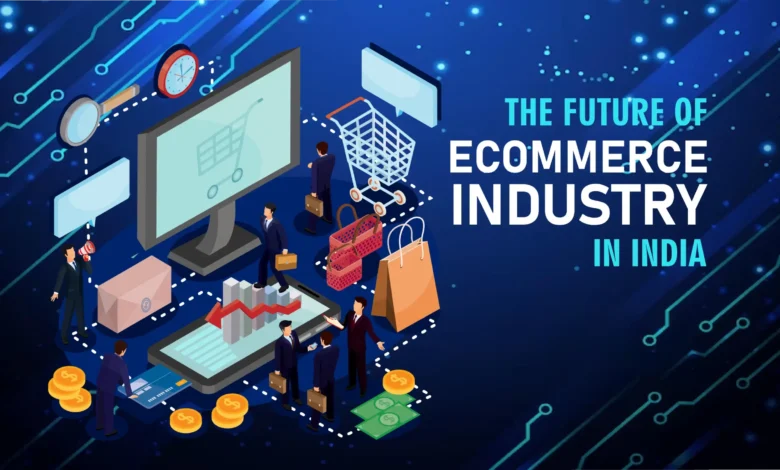The Future of E-commerce in India: Trends and Predictions for the Next Decade

Indian e-commerce has been growing exponentially, and we can reasonably predict its scope to increase significantly in the next decade. Here are some key trends and predictions that will shape the future of e-commerce in India.
Increased Reach in Lower Tier Cities
Current State
E-commerce in the country is largely concentrated in metro cities. However, with the increased use of the Internet and smartphones, there has been a notable increase in online shopping in Tier II and Tier III cities.
Future Outlook
E-commerce platforms will increasingly adopt curated content and marketing strategies to target lower-tier cities nationwide. Further, these companies will launch more initiatives to support business owners in listing their products in such areas. However, the emphasis will be on improving logistics and networking to ensure timely deliveries even to the lower-tier cities in the country.
Mobile Commerce
Current State
E-commerce in India runs largely on smartphones, and the technology in use already allows mobile pay and other mobile-based transactions.
Future Outlook
The future of e-commerce will depend highly on mobile transactions because of the current lower prices of mobile phones and the expected growth in mobile internet speeds. Consequently, the sector is expected to record higher investment levels in the development of mobile applications.
Personalization and AI
Current State
Artificial intelligence is currently used in e-commerce platforms to facilitate sorting recommendations to the user, making inquiries via chat, managing inventory, etc.
Future Outlook
Artificial intelligence will increasingly be used in more advanced areas, such as virtual try-ons, making more appropriate futuristic recommendations based on data, etc.
Social Commerce
Current State
Nowadays, social media platforms play a significant role in integrating a customer’s social identity with e-commerce transactions.
Future Outlook
Social commerce will experience a booming trend, with Instagram and Facebook recognized as the biggest social sales platforms. Influencer marketing and shoppable posts will be the two elements supporting this cycle. They will be irreplaceable features of the e-commerce system.
5. Sustainable and Ethical Practices
Current State
In the Indian e-commerce system, sustainability has slowly been forming a significant part, and some companies are beginning to introduce more eco-friendly features.
Future Outlook
People are becoming more aware of environmental issues, and this will be met with an outburst of the desire to buy green that will shoot upward in demand. At the same time, companies will have to respond to this increasing public expectation and implement eco-friendly features in all forms, from proper packaging to green supply chain management.
6. Payment Innovations
Current State
Digital payments are becoming highly popular in India, with the acceptance of UPIs and other digital wallets.
Future Outlook
In India, Payment innovations will continue to evolve to find the most convenient options that will be widely accepted, with a focus on higher security features. In the long run, e-commerce systems might even be prone to implementing cryptocurrency as blockchain technology is in great demand.
7. Online Lottery Tickets and Casino Games
Current State
Although online play, including online lottery tickets and casino games, is not strictly forbidden in India, regulations vary by state. It is, however, notable that Indians are very prone to digital gaming and betting platforms. Chiefly, online gaming includes fantasy, regular sports betting, poker, rummy, and so on.
Future Outlook
The number of digital and online gaming and betting platforms will increase in India. At the same time, the market’s growth will be associated with the customers demand for accessible gaming options. As a result, the online betting market will witness a greater number of emerging entrepreneurs and existing companies willing to extend the scope of their options, thus enhancing the degree of competition in the industry.
Did we miss a trend? Let us know in the comments section.




